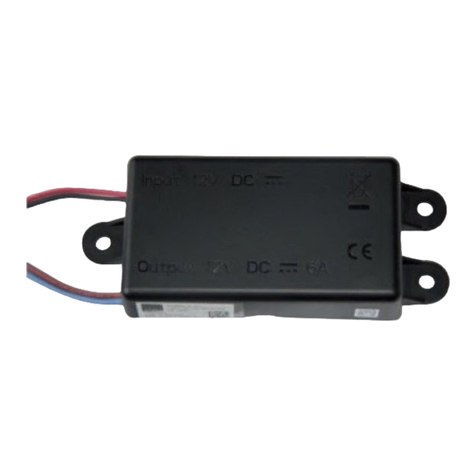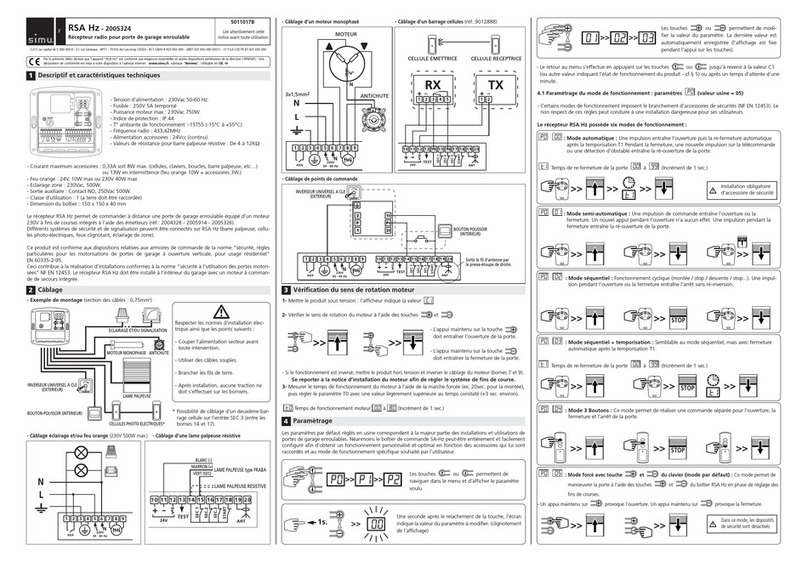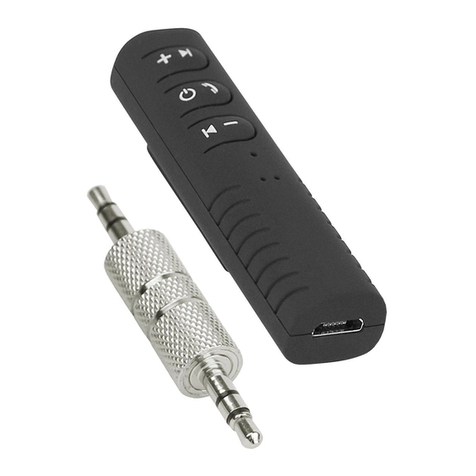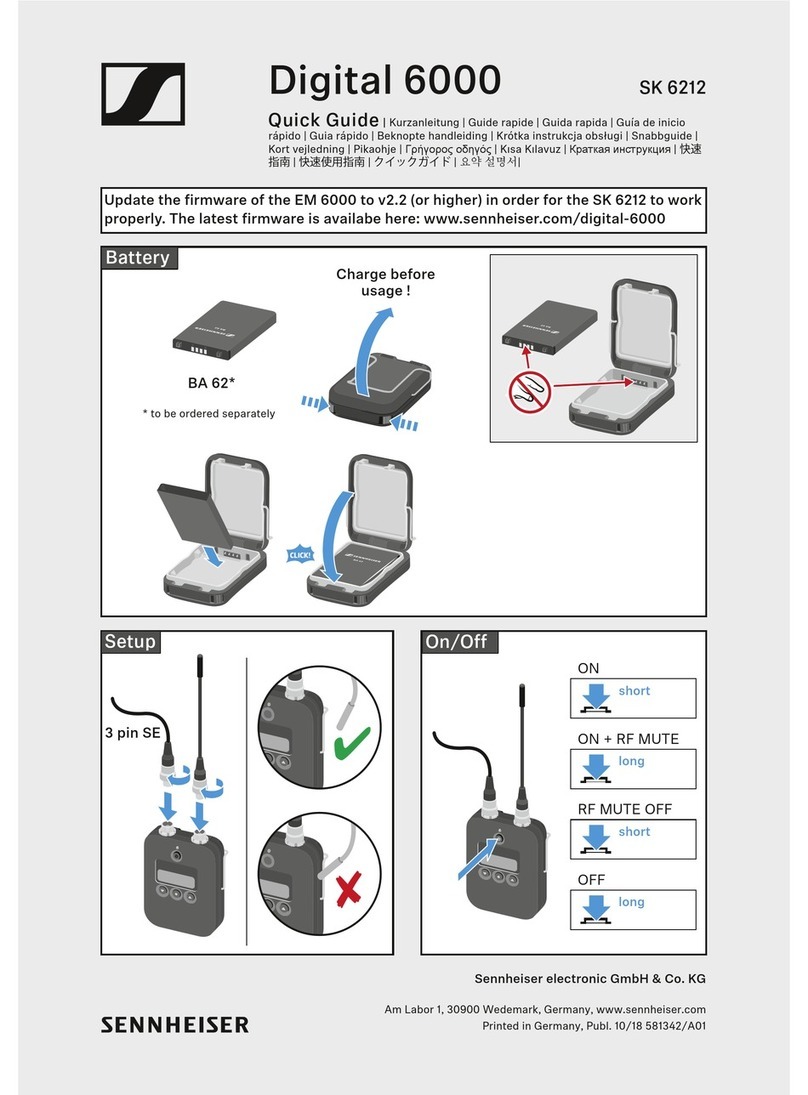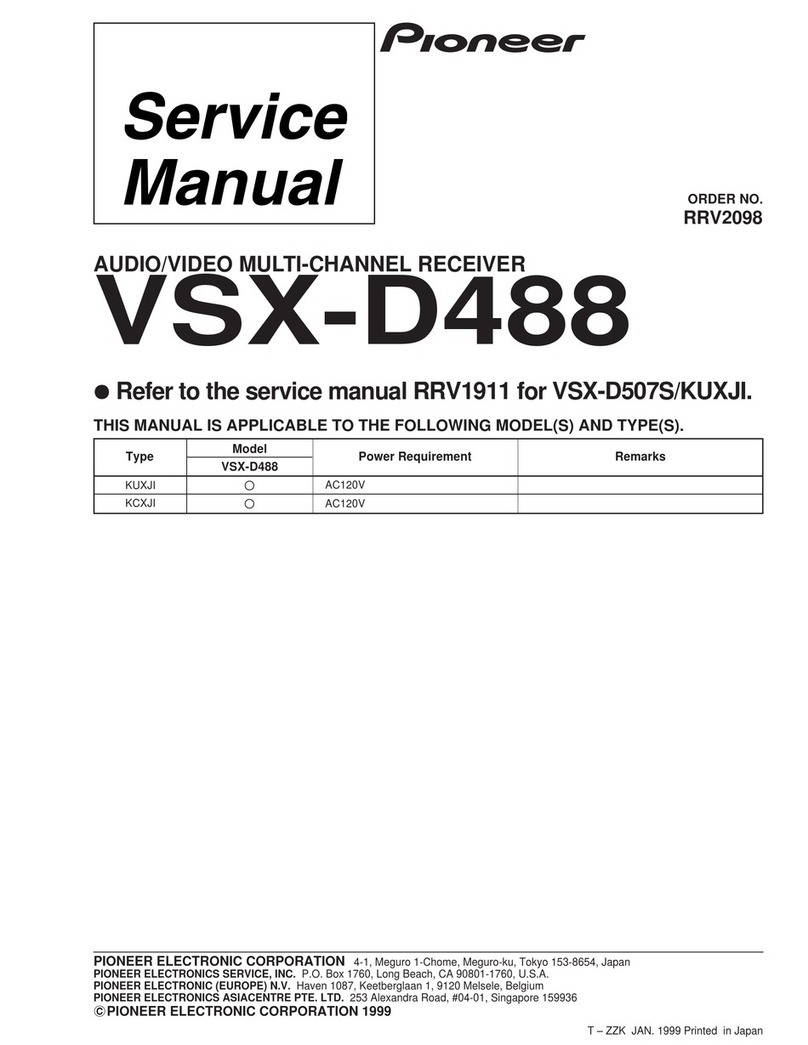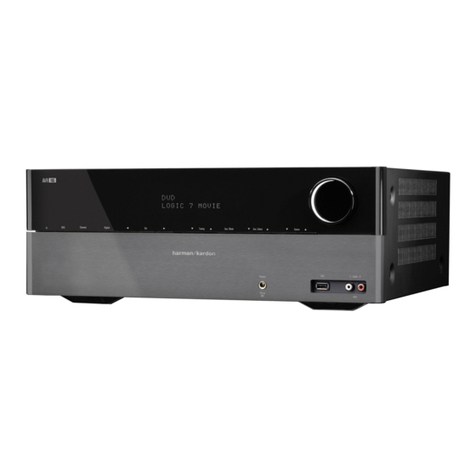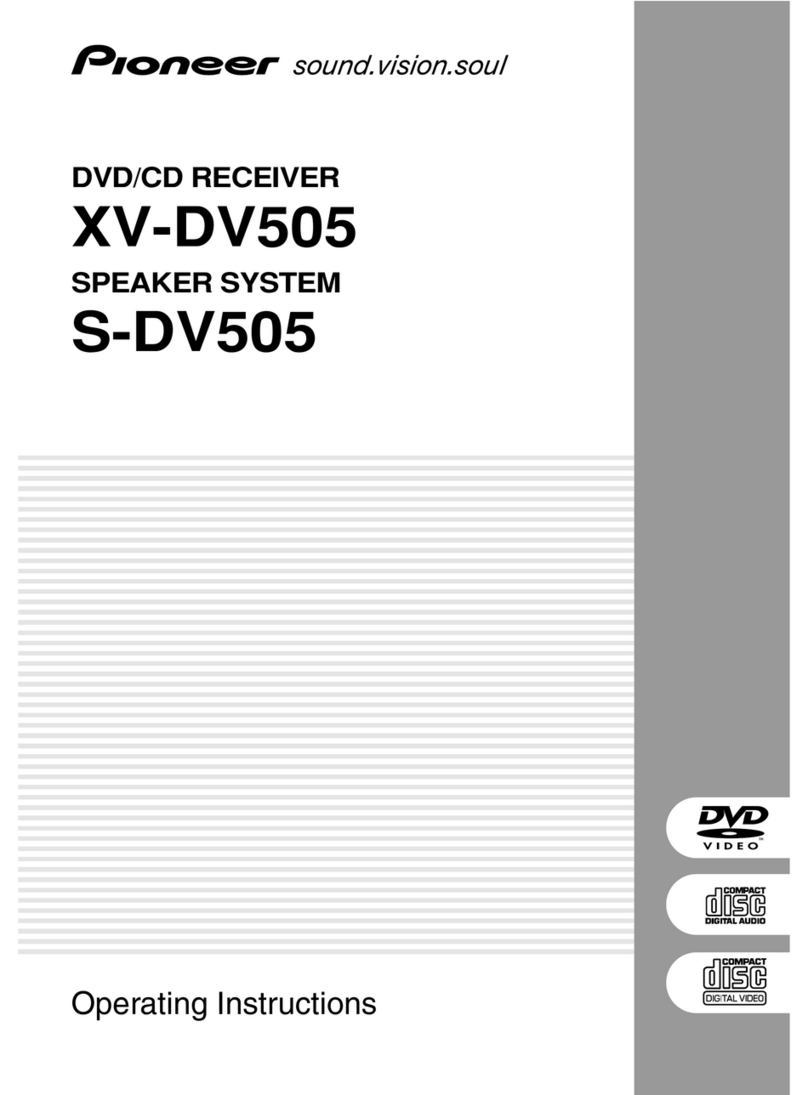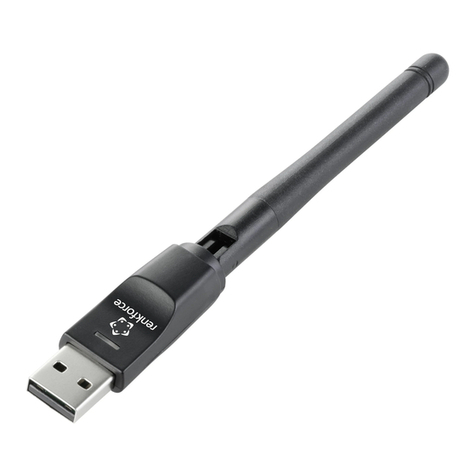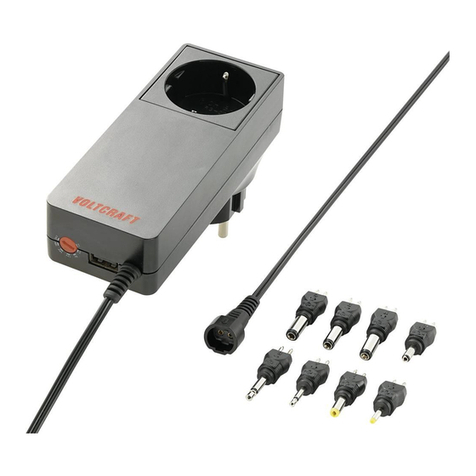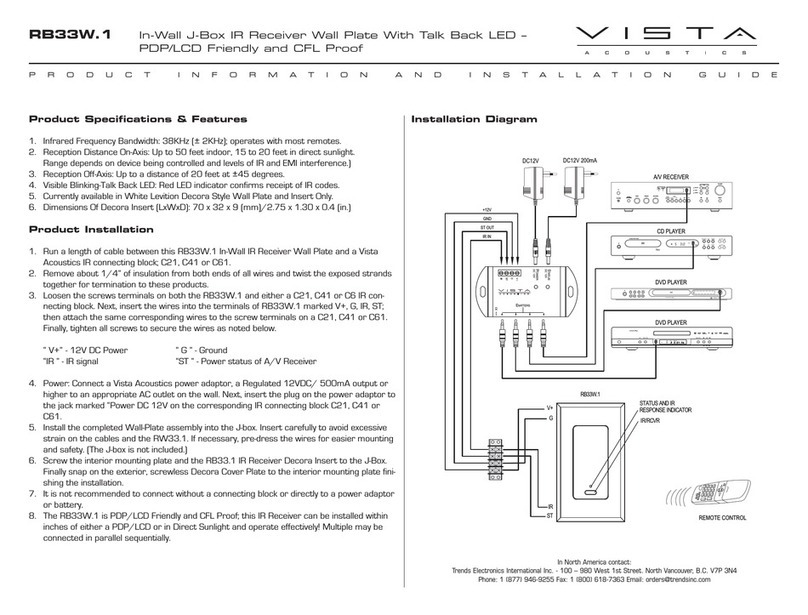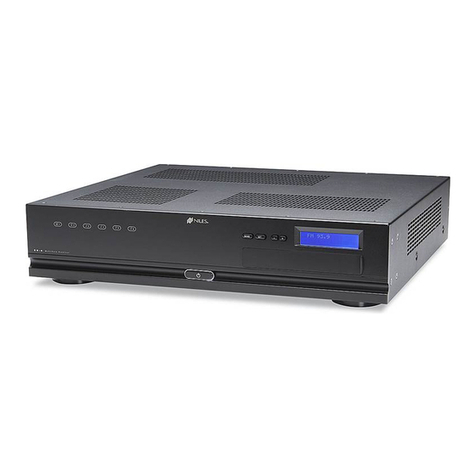Simu RSA Hz PRO User manual

1/4
Technical data
1
Wiring
2
Example of installation (wire section : 0,75mm2)
Wiring of a single-phase motor Wiring of a safety edge Wiring of lighting or sign (230V - 500W max.)
Wiring of photo-cells Wiring of sequential control switches
- Power supply voltage: 230Vac 50 Hz.
- Fuse: 250V 6,3AT with timeout
- Max motor power: 230Vac 1200W.
- Protection rating: IP 44.
- Ambient operating T°: -15°C à +55°C.
- Radio frequency: 433,42MHz
- Accessory power supply: 24Vcc (direct).
- Resistance values for resistive sensor bar: From 5 to 14 KOhm
- Maximum current for accessories (cells, keypads, loops,
sensor bar, etc…): 0.33A i.e. 8W max. or 13W intermittent
(orange light 10W + accessories 3 W).
- Orange light: 24V, 10W max ou 230V 40W max
- Area lighting: 230Vac, 500W.
- Auxiliary output: Contact NO, 250Vac 500W.
- Operating class: 1, the ground must be connected.
- Box dimension: 150 x 150 x 40 mm
Apply the electric installation standards, as well as the
following points:
- Switch off the mains before any intervention.
- Use flexible cables.
- Connect the ground cables.
- After installation, no traction must be applied to the
terminal strips.
* Possibility of wiring a second photocell between terminals 14
and 17.
- The RSA Hz PRO receiver is used to control an industrial or commercial door fitted with a 230V motor with built-in endstops using TSAHz 2 channels
and TSAHz 4channels transmitters and Simu Hz transmitters. Different safety and signaling systems can be connected to the RSA Hz PRO (safety edge,
photocells, flashlights,area lighting).
- This product complies with recognized technical standard and safety regulation. When carrying out wiring and installation work, always refer to current
standards. This contributes to implementing installations complying with the standard “safety in using motorised doors” NF EN 12453. RSA Hz PRO
must be installed indoor with a motor equipped by a manual override system.
- Any assistance required on automation components must be carried out by qualified technician.
Key switch (outdoor) Button switch (indoor)
Photo-cells*
Safety edge
Single-phase motor
Orange flashing light and / or aera lighting
Safety
brake
3x1,5mm2
MOTOR
Safety brake
Resistive safety edge
Optical safety edge
WHITE (-) P5=04
NC NC NC NO
P5=03
BROWN (+)
GREEN (SEC)
Receiver cell
3-4:NO
3-5:NF
24V 24V
Transmitter cell
Pull the antenna wire through the right-hand wire grommet
Universal key switch
(outdoor)
Button switch
(indoor)
S.A.S. au capital de 5 000 000 !- Z.I. Les Giranaux - BP71 - 70103 Arc-Les-Gray CEDEX - RCS GRAY B 425 650 090 - SIRET 425 650 090 00011 - n° T.V.A CEE FR 87 425 650 090
Hereby SIMU declare that this equipment “RSA Hz PRO” is in compliance with the essential requirements and other relevant provisions of directive1999/5/EC.
A declaration of conformity is available at the web adress: www.simu.fr - Usable in UE, CH
GB RSA Hz PRO
Radio receiver for rolling garage door
5064942C
Read carefully these instructions before any use.

STOP
STOP
STOP
2/4
Checking the motor’s rotation direction
3
Parameters
4
3.1- Powering on the product: the display indicates the value
3.2- Check the motor’s rotation direction using the et keys
- If the operation is reversed, power off the product, and revert the motor’s wiring (terminals 7 and 9).
- Refer to the motor's installation manual to set the end stop system.
3.3- Measure the motor operating time using permanent running (e.g. 20sec. for rising), then set the parameter with a value slightly above (+4 sec.) the time
observed ( : Motor operating time from to , 2 sec. increments)
- Press and hold the key to open the door.
- Press and hold the key to close the door.
- Use the and keys to browse the menu and display the parameter
required. One second after releasing the key, the screen indicates the parameter
value to change. (display blinks).
- Use the and keys to change the value of the parameter. The last value is recorded automatically (the
display is fixed when pressing the keys).
- To return to the menu, press the or to return to value (or any other value indicating the product’s operation: see § 5) or after a one-minute wai-
ting time.
4.1- Configuring the operating mode: Parameter (factory setting = )
- Certain operating modes impose connecting safety accessories (NF EN 12453). Non compliance with these rules can lead to a facility hazardous for its users.
RSA Hz PRO has six operating modes:
1s.
The default modes correspond to the main part of installations and uses of roller garage doors.Nevertheless, the RSA Hz PRO control box can be completely and
easily programmed in order to obtain a personalized working according to the accessories connected and the specific working mode desired by the user.
- : Automatic mode: Pressing the remote control opens and
closes automatically after timeout . During closing, pressing the
remote control again or the detection of an obstacle reopens the door.
- : Closing time of the door ( to , 1sec. increments)
Mandatory installation of safety accessories.
- : Forced mode with the and keys on the key-
board (default mode): This mode is used to control the door using the
and keys on the RSA Hz PRO box in the endstop adjustment
phase.
- Press and hold to open the door.
- Press and hold to close the door.
In this mode, the safety devices are not activated
- : Sequential mode: Cyclic operation (up / stop / down /
stop...). Pressing during opening or closing stops without reversion.
- : 3-button mode: This mode is used to set separate controls for opening,
closing, and stopping the door.
- : Semi-automatic mode: Pressing the control triggers opening or closing.
Pressing again during opening has no effect. Pressing during closing reopens the door.
- : Sequential mode + Timeout: Similar to the sequential mode, but with
automatic closing aftert timeout .
- : Closing time of the door ( to , 1sec. increments)

3/4
4.2- Safety input function: Parameters
- When using a resistive safety edge, the latter must be wired onto safety input 1. The opening safety device ( = ) stops then recloses partially (non
configurable action).
Configuration of safety input 1 (safety edge*): Parameter (factory setting = )
4.3- Safety action upon closing: Parameter (factory setting = )
- The safety action at opening ( = ) is not configurable (stopage followed with partial door reopening). However, safety actions upon closing (
= ) can be configured.
Select parameter by pressing several time on the key From the release of the key, the display indicates and flashes.
- For programming the “UP / STOP / DOWN” order, select using the key or the functionality then program the key associated with this order.
- For programming the auxilliary output order, select using the key or the functionality then program the key associated with this order.
4.4- Configuration of the self-testing function: Parameters
- The self-test function is used to check proper operation of the safety accessories automatically at the end of closing.
Self-testing safety input 1: Parameter (factory setting = )
4.5- Programming remote controls : Parameter
- According to the type of operation chosen in chapter 3.1, the value of the parameter does not produce the same effects.
Sequential mode
3 buttons mode
Ensure you configure the safety input used for the appropriate self-test: safety 1: P1+P5, safety 2: P2+P6, safety 3: P3+P7 Once the safety accessories
are connected and the safety inputs configured, check manually the proper operation of the accessories before the final start up of the facility.
Configuration of safety input 2 (photocell*): Parameter (factory setting = )
Configuration of safety input 3: Parameter (factory setting = )
Self-testing safety input 2: Parameter (factory setting = )
Self-testing safety input 3: Parameter (factory setting = )
No accessories connected to safety input 1 (default mode)
Accessory connected to safety input 1 enabled when opening the door
Accessory connected to safety input 1 enabled when closing the door
ADMAP** safety: active upon closing + forbids starting at opening
Contact for connecting an emergency stop device
No accessories connected to safety input 2 (default mode)
Accessory connected to safety input 2 enabled when opening the door
Accessory connected to safety input 2 enabled when closing the door
ADMAP** safety: active upon closing + forbids starting at opening
Contact for connecting an emergency stop device
No accessories connected to safety input 3 (default mode)
Accessory connected to safety input 3 enabled when opening the door
Accessory connected to safety input 3 enabled when closing the door
ADMAP** safety: active upon closing + forbids starting at opening
Contact for connecting an emergency stop device
No self-test of the accessory connected (default mode)
Self-test for photocells by power supply cutting. Caution : the transmitting cell
must be supplied on terminals 10/12 and the receiver cells on terminals 10/11).
Self-test for accessory fitted with a TEST input (cells or sensor bar).
No self-test of the accessory connected (default mode)
Self-test for photocells by power supply cutting. Caution : the transmitting cell
must be supplied on terminals 10/12 and the receiver cells on terminals 10/11) :
Self-test for accessory fitted with a TEST input (cells or sensor bar).
Opening / Closing Command (default mode).
Auxiliary output control
(driving the accessory
connected to the AUX output).
Open command
Close command
Stop command
Auxiliary output control (driving the accessory
connected to the AUX output).
Opening
Stop
Closing
opening
Stop
closing
Auxilliary
Opening
Stop
closing
Stop the door
Stop, then total reopening of the door (default mode)
Stop then partial reopening of the door(2 seconds operation)
No self-test of the accessory connected (default mode)
Self-test for photocells by power supply cutting. Caution : The transmitting cell
must be supplied on terminals 10/12 and the receiver cells on terminals 10/11).
Self-test for accessory fitted with a TEST input (cells or sensor bar).
Self-test for resistive sensor bar (value comprised between 4 and 12 K
Self-test for optical sensor bar
Select parameter by pressing several time on the key From the release of the key, the display indicates and flashes.
- For programming the “UP” order, select using the key or the functionality
then program the key associated with this order.
- For programming the “DOWN” order, select using the key or the functionality
then program the key associated with this order.
- For programming the “STOP” order, select using the key or the functionality
then program the key associated with this order.
- For programming the auxilliary output order, select using the key or the functionality
then program the key associated with this order.

4/4
4.5.1- Choose the remote control key's function to program:
- Display the value of the function to program using and keys on the RSA Hz PRO.
4.6- Clearing remote controls: Parameter (factory setting = )
- Clearing all remote controls is performed by pressing and holding for 3 seconds the key
until dashes appear.
4.7- Configuration of auxiliary accessories: Parameter (valeur usine = )
- The auxiliary contact is a dry contact. A single accessory can be connected and power supplied according to the use configured.
4.8- Configuring the operating time: Parameters - )
- : Motor operating time (factory setting = = 160 seconds)
> (increments of 2 sec.) Adjust a time slightly longer than the actual operating time (opening time + 4s.).
- : Time for reclosing the door (valeur usine = )
> (increments of 1 sec.) Enabled in automatic operating mode (§ 4.1).
- : Delay time before motor reversion (factory setting = )
Check that the value of the parameter is equal to
> (increments of 1 sec.) Particular case of motors not accepting reversion of the rotation direction without stopping phase.
- : Area lighting time after cycle end (factory setting = )
> (increments of 1 minute.)
To return to the menu, press the and keys to return to value (or any other value indicating the product’s operation: see §5) or after a one-minute
waiting time.
4.5.2- Save the channel (RSA Hz PRO can save maximum 32 channels):
- Press simultaneously the remote control key to program and the key on the RSA Hz PRO for
three seconds until dashes appear
- The RSA Hz PRO can be controlled in the three-button mode using a reverter with three keys wired onto the START,SEC2, and SEC3 inputs (if the latter are confi-
gured “non wired”: chapter 4.2).
3s.
3s.
Contact to drive an electric latch
(The latch must be supplied with an outside power supply)
Contact to drive an Orange flashlight without notice
(only during the door's operation)
Contact to drive a zone lighting
(default mode, automatic switch off after timeout T3 - §4.8)
Contact to drive an Orange flashlight with notice
(before starting and during the door's operation)
Contact to drive an electromagnetic latch Contact to drive an open door indicator
Contact of the stable mono relay type to drive an automation system
Contact of the unstable relay type to drive an automation system
Waiting for a command
Delay before closing door
Opening cell hidden
Closing door in progress
Opening door in progress
Closing cell hidden
ADMAP* cell hidden
Emergency stop triggered
Permanent contact on “START" input
Safety Self-testing
Door movement forced by keypad
Delay before motor reversion
Self-test failed on safety input 2
Self-test failed on safety input 3
Intensity exceeded on 24V power supply
(too many accessories connected)
Operating time “T0” too short
or motor endstop not reached
Safety fault at opening
(contact always open)
Safety fault at closing
(contact always open)
ADMAP* safety fault
(contact always open)
Self-test failed on safety input 1
Operating information
5
List of operating information displayed by
RSA Hz PRO
used to view and an easy diagnostic of the facility’s status.
Event codes: Default codes:
Log of the last 10 faults: : See fault code above.
Cycles counter: Tens and units, Thousands and hundreds, Hundred and tens of thousands, (example :
U2 U1 U0
= 5249 cycles).
Accessories consumption: :Puissance consommée en watts de à
Reset of the RSA Hz after a fault: To clear the fault codes, select the parameter then press and hold the key for 3 seconds until dashes appear.
- For the fault codes from to :Once the fault is corrected, it is not required to clear the fault code of the log to return to normal operation.
- For the fault codes from to :Once the fault is corrected, you must clear the defect code for the log to return to normal operation.
*If the connection of accessories matches the diagram in chapter 1.
**Area Dangerous for Movement Accessible to the Public.
Table of contents
Other Simu Receiver manuals
Popular Receiver manuals by other brands
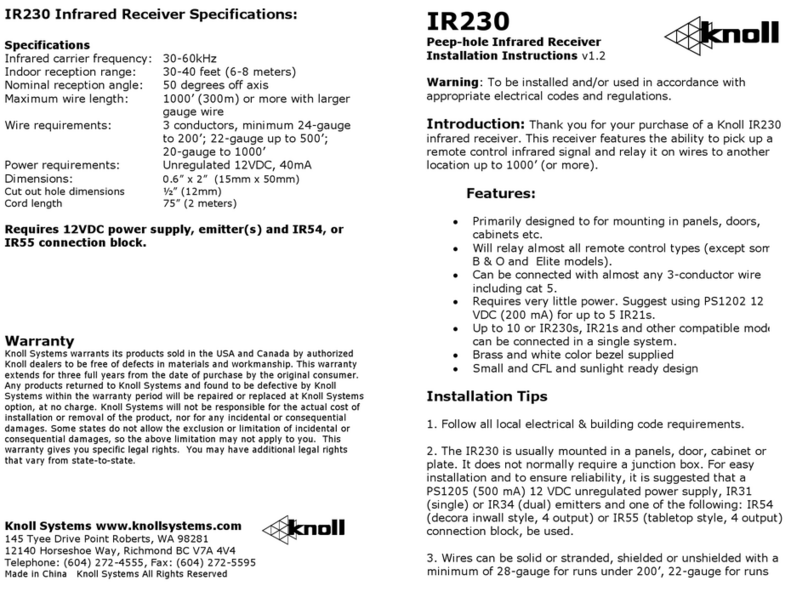
Knoll
Knoll IR230 installation instructions
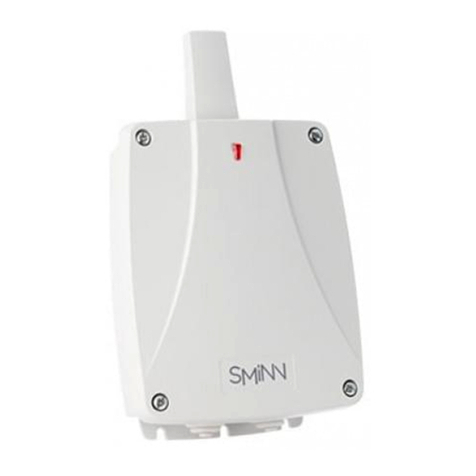
Sminn
Sminn BOX M GSM B instruction manual
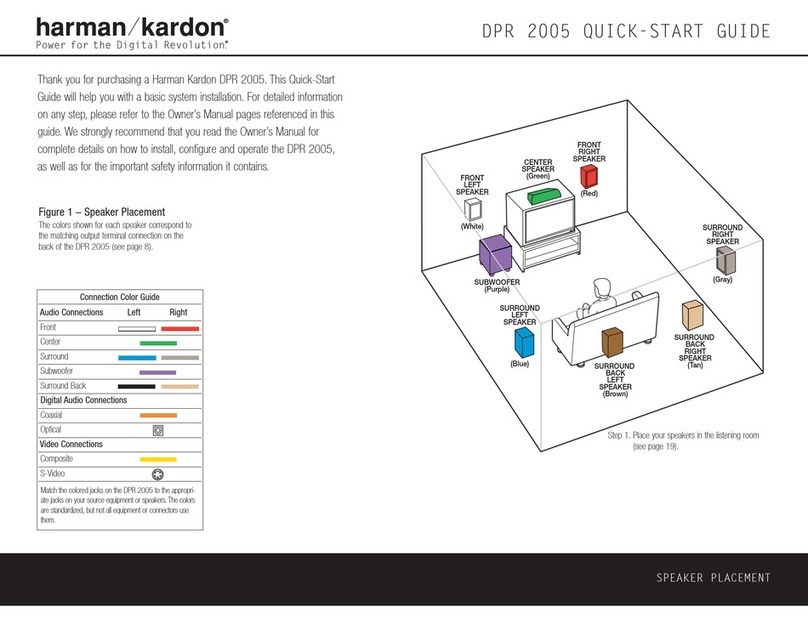
Harman Kardon
Harman Kardon DPR 2005 quick start guide
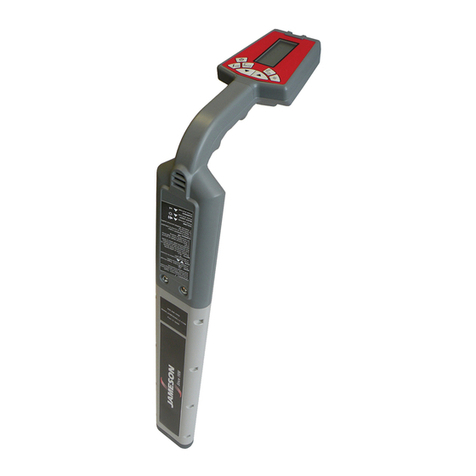
Jameson
Jameson 17-300R Operation And Safety Instruction Manual
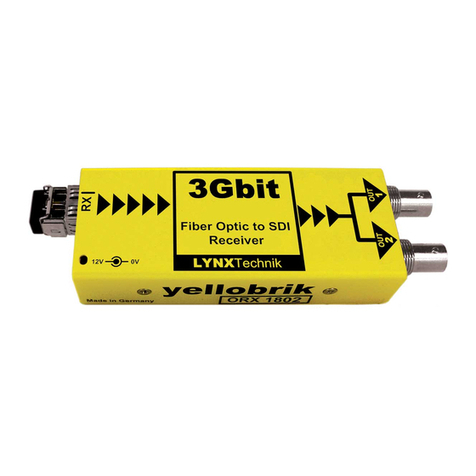
LYNXTechnik
LYNXTechnik Yellobrik ORX 1802 quick reference
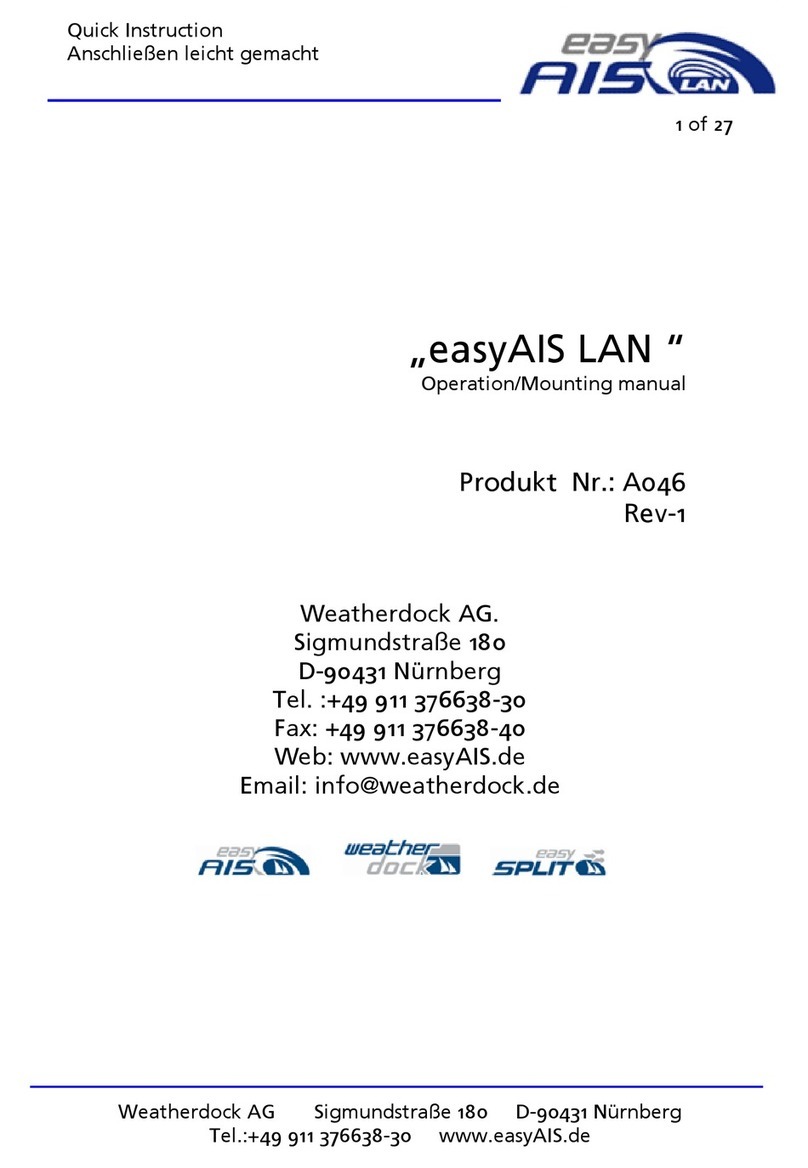
Weatherdock
Weatherdock easyAIS-LAN A046 Operation manual
